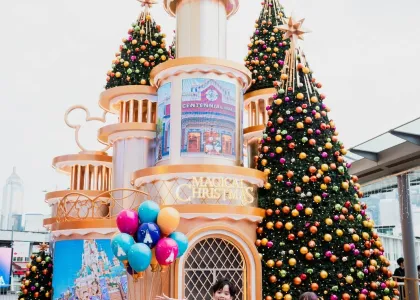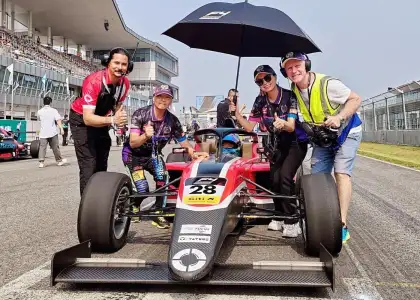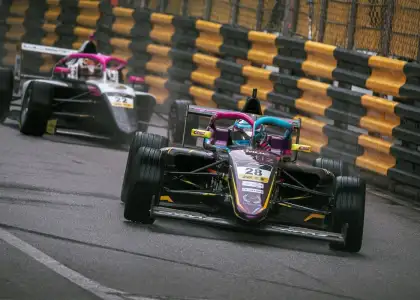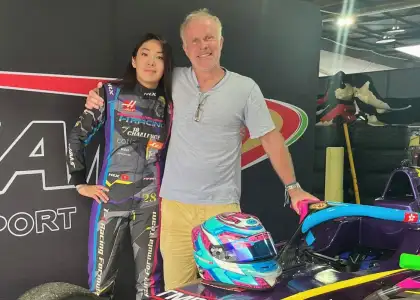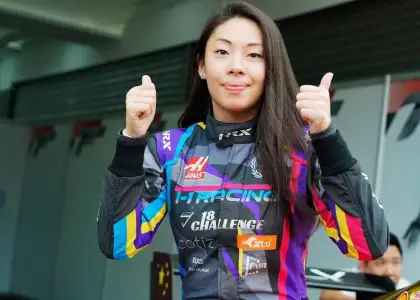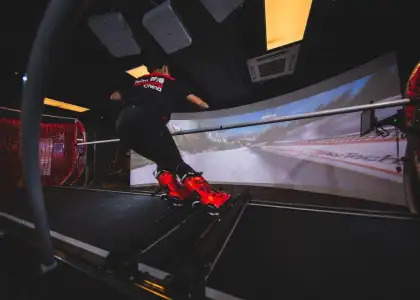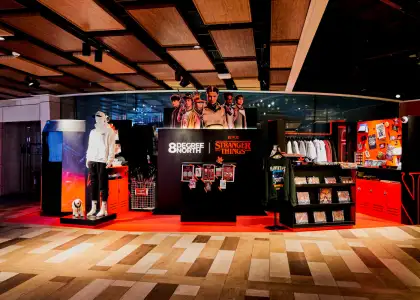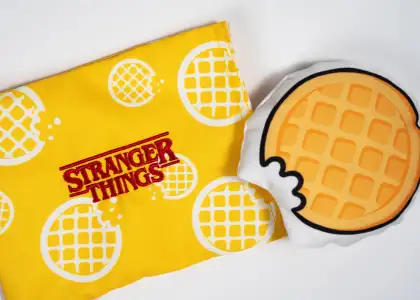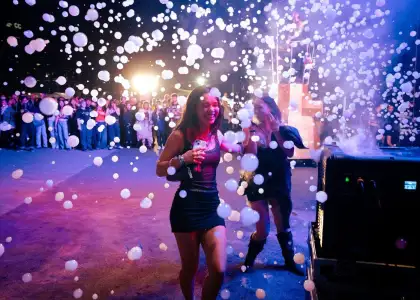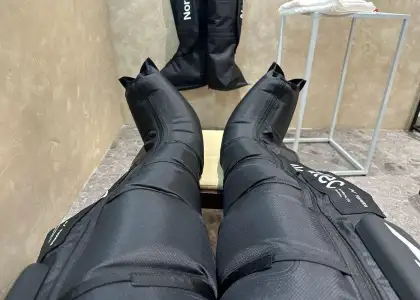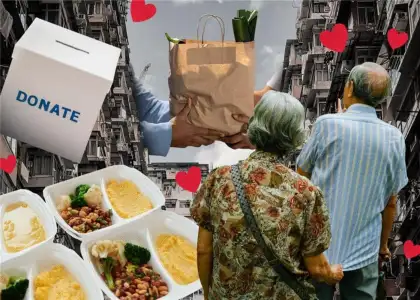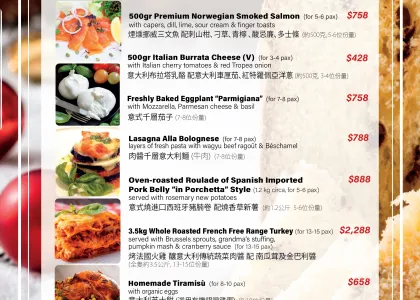Artist Spotlight: Mr. Koo on His Art and Microrealism Tattoo Mastery
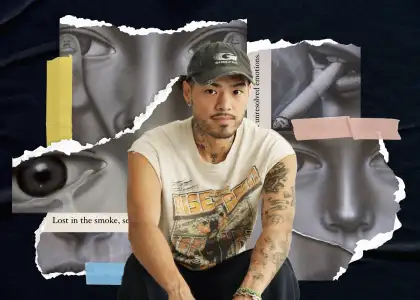
Meet Prairie Koo, better known as Mr. Koo on Instagram — one of North America’s standout tattoo artists, who is now based in Hong Kong!
Originally a designer of interior design and architecture, Mr. Koo is the co-founder of Ink & Water, a custom tattoo studio in Toronto, and a pioneer of fine-line micro-realism tattoos.
As one of Toronto’s most popular tattoo artists, voted Best Micro Tattoo Artist in Toronto, he is frequently sought-after by celebrities, and has collaborated with brands like Nike, Raptors, NBA, and Doc Martens, to name a few.
The Canadian artist moved from Canada to Hong Kong in early 2024, and in no time has made sizeable waves in the local art scene.
His journey began at New Art Est-Ouest Auctions with the exhibition "Present Tense - Tomorrow Odyssey," followed by a striking portrait show "Unmasked," at Young Soy Gallery.
Earlier this year, Mr. Koo created his collection, Realeyes, which drew inspiration from his personal struggles. This collection reflects his continuous effort to promote mental health through art.
The BeatAsia sat down with Mr. Koo to discuss his new collection, evolving craft, and thoughts on the local art and tattoo industry.
Hi Koo! Can you explain your inspirations behind your collection 'Realeyes'?
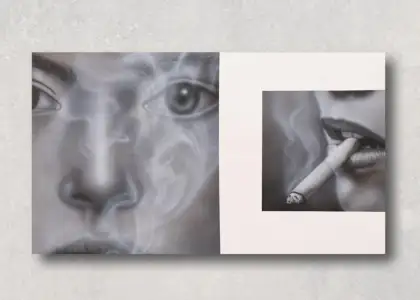
Realeyes is my new art collection that I created a few months ago. It's based around this face that was created by merging a bunch of faces that I knew in my life into one.
I thought that a lot of people around me were putting on this face that they were okay. So I decided to take everybody's face and create this universal face that is more androgynous, so that when you look at the pieces, you can put yourself into it instead of just seeing somebody else's face.
It speaks on a variety of mental health, social problems, and trauma issues that either I or the people around me have. I went through a really hard time, and I felt like my art should help people talk about mental health or at least raise more awareness. Most of the time, whatever money I get, I give a portion back to mental health awareness.
Our tattoo shop used to donate money for every tattoo we did. We’d give about $100 to charity, and that’s something we did for years and years. We ended up being one of the biggest donors to these charities, even as a tattoo shop. I want to do the same coming back here.
How did you break into the art industry in Hong Kong?
I went to a gallery show, Present Tense[at New Art Est-Ouest Auctions], where I met Aileen [Tse] and started talking to her. She fell in love with my work [Realeyes], took the leap, and gave me a chance.
I feel like I'm not the typical artist – I'm willing to do a lot of grunt work. For example, I'll get sponsorships for the event, the food, [and] the drinks. I just grew up like that, where I did all this work and loved it. To me, it's more fun than just sitting there.
How personal is the collection 'Realeyes'?

It's very personal. Before I came back to Hong Kong, I was really sick. For many years I was in and out of the hospital. I couldn't eat for a few years, my stomach, diaphragm, [and] esophagus all stopped working. And then I was at the breaking point, at the end of my life, almost. That’s where The End piece came from. When you're that close to the end, you realize nothing matters and you're so much happier without all the burden you have.
So before I came to Hong Kong, I gave away everything I owned just to get that feeling again. I came back with a backpack, just enough money for a year, and explored art for art, instead of just doing tattoos and everything else I used to do.
Are there any differences in concept or process behind each painting in the collection?

In my pieces, there are always small things to tie the whole piece together with mental health. All the faces have something on them to tell a story. For example, one of the pieces at Young Soy [Fly], features a fly on the face of the girl, right in between her eyes. All the other pieces are just staring through the viewer, but that one looks right at you.
I'm trying to talk about small things that bother people. When you stop paying them any attention, they go away. Like a fly that keeps flying on you – you get really pissed off because it keeps coming back. But if you just let it be, it’s not going to change your life.
What materials did you use in 'Realeyes' and what challenges did you face?
For Realeyes, it's 90% airbrush, and all done with acrylic. I've never worked with airbrush before this collection.
In the beginning, I used a very cheap Taobao airbrush that was like $40 with a compressor attached to it. Then slowly I got better materials and bought proper airbrushes, and the quality exponentially went up.
I think the challenge with airbrushing is finding the right space in Hong Kong because there is a lot of debris and dust that comes out of it, and I'm trying not to breathe in paint the whole day when I'm working for hours and hours.
Other than that, just developing and pushing this style that isn’t a big thing in Hong Kong. Here they don't like portraits, or things looking at you. They want cute, cartoony stuff, that's just been the trend for the past few years, or they want something more abstract. My artworks are trying to push the boundaries of what Hong Kong likes and sees often.
Why did you decide to move to Hong Kong?
A big part was mental health-based. I move every single year, so people don't know where my studio is. I woke up one morning and said, you know what, I’m going to move back. I have a bit of family here, so it made it a little easier to come back. And I kind of grew up here as well.
Are you happy with your decision to move?
I like it! It's a little slower than what I'm used to work-wise, and in terms of knowing people, but it's getting there. It's just that now I'm just known as the finger guy or the garbage guy.
I don’t have any regrets. You can't regret a choice that you have already made, you can only make the best of it. I feel like you need something like that to rebuild or find yourself cause once you're too comfortable, you get stuck and hate where you are, so I completely change up what I do every year.
Many people recognize you as the leader of Microrealism tattoos. Could you share more about your practice and what sets it apart?

When we started, there were about 100-something stores in Toronto doing Microrealism tattoos, and by year two, there were like 300 [to] 400 stores in Toronto that mimicked our style. There was a lot of pushback to it even in the first few years.
I opened Ink & Water and we were one of the most hated shops in Toronto because we changed up the whole industry. We [microwork artists] don't portray ourselves as hardcore rock'n'roll guys, and as a designer, I felt like tattoo shops need to be more welcoming instead of being a dark place with heavy metal music.
We had a cereal bar, a plant wall, and our artists weren't selling death metal skulls and that kind of stuff. Our target market was women, not men, so we kind of changed up the whole industry and month after month more shops started opening.
When you go to conventions, everybody's like this [Micro tattooing] is not tattooing, it's not going to heal well. Still to this day, micro tattoos will never win any competitions at conventions.
Are you exploring this style through your art or heading in a different direction?
I’ve actually never painted in this style before. Prior to this collection, I didn’t really do any realism. My old pieces were all 6 x 8 or x 10 feet and there was more color, it was more Asian propaganda-style art. It wasn't too realistic, but it depicted a story, all around the same topics of mental health.
My previous artwork living in Canada was very Asian-oriented. I felt like I was always out of touch with my Chinese and Hong Kong culture. But coming back to Hong Kong – I don't think there's a hint of Asian in this whole collection. I didn't want to be boxed in as an Asian artist painting Asian-inspired stuff.
I would like to bring back the Asian theme a little bit, but not as much as I used to before, because I’m finding a balance between my culture and where I grew up, and also finding myself a bit more the more I paint.
When did you get into tattooing?

I learned how to tattoo in 2008 or 2009, and I just did it for friends and family for a while. I did it through university, but I didn't really push it as a career. But then in 2014, I started doing it daily, and got really big doing sternum tattoos. That's when Rihanna had her sternum tattoo, so I became famous for doing those. And because I was using very fine needles, that's what I brought to Toronto, and just kept doing more fine line stuff. I got very well known for that and [that's when] I opened up Ink & Water.
Are you focusing more on Fine Art in Hong Kong over tattooing?
Art is my main focus, but I'm trying to push this collection slowly before I move on to the next collection, because I can't just keep creating for the sake of creating if there's nowhere to put it or no one to buy it, then it just becomes a waste of time and money. But I still love doing tattoos – it’s one of my passions. It’s like meditation. I've been doing it for almost 15 years. It’s one way for me to meet people, and every client I have ends up being my good friend, so I love it more than anything.
Art, on the other hand, I'm very secluded. I don't leave my studio for probably two to three days if I'm working.
After exhibiting at New Art Est-Ouest and more recently, Young Soy, what do you make of the art scene here?
In Toronto, all my buyers were private buyers. Some were rich families, but they were all private, commission-based work. Coming here was a little more difficult because I feel like people don't really care for the art. They care more about the name of the person – if it’s trendy or not – that's just a sad fact about buying art in China and Hong Kong. Currently, I don't think it’s thriving, all I'm hearing from galleries is they're not selling anything, and that nothing is moving. But that makes it a perfect time to launch as an artist, to start when it's low and make your way in. I’m kind of lucky that I got into H Queen’s pretty quickly within the first two months of being in the Hong Kong art scene.
Can you tell us more about your installation at New Art Est-Ouest Auctions?

So that piece, Buying Happiness, is called that because I realized when I got here that everyone's hobby is to consume, eat, and spend money, whereas I'm the complete opposite. I realized when I got sick that money never bought me happiness. And that's why I gave everything away. But that piece was giving back to charity, to Mind HK. I built it myself in my own hands; it was my first time really working with this kind of machinery. At first, it had eye tracking that would follow the buyer everywhere.
You look at the box and it tells you can get a custom, limited-edition print, but you have to donate money to the box. The first one is free, the next one is whatever price they wanted to pay. For the first one, they paid a dollar, then it went up slowly to HK$200, then kept going up to the point where people were like, 'I'm not paying this much for a piece of card.'
The whole joke was people buying a useless piece of paper just to say they spent that money. In the end it all went to mental health.
I think the way I pitched it was a very good PR stunt for them [New Art Est-Ouest Auctions]. I was like, why don't we create a piece that can sell the cheapest artwork out of a blue-chip gallery, because in a gallery, even normal prints are HK$4000 minimum.
What requests from clients do you see most often in Hong Kong?
The most popular style I see here is very traditional, like American traditional. They like bold and colorful, or cute tiny floral stuff.
Here, clients want a tattoo and hear you're a good name, but don't really look at your work at all. They just want what they've seen on Pinterest and me to copy it.
The biggest problem about Hong Kong is the first question they always ask is, how much is this? But I don't even know what they want. And that makes my job really hard. 99% of the time it ends up in them asking for a cover-up.
What challenges have you faced creating art for a commercial audience?
In the gallery world, just like the tattoo industry, the galleries take quite a lot. It’s 50% commission, but I understand why. As a shop owner, there's a cost for rent, especially in Hong Kong. But as an artist, if we just keep putting pieces at galleries and they're not able to sell or move them for you, you’ve wasted money to bring it there, get a frame, and get all the pieces done right until it's sold. And most people in Hong Kong want to buy art from a gallery.
Can you tell us something about yourself that no one knows which might be surprising?
The reason why I started vlogging on Instagram was because most people thought I was very intimidating and hard to talk to. And once I started vlogging, people were like, 'Oh, you're actually a nice, funny dude,' not a dude covered in tattoos that can't be approached.
I've also always loved hairless animals. I have a hairless cat in Toronto and here I have a Xolo, one of the rarest dog breeds in the world named Chico. I had to give him a Mexican name. As an artist, I like things that aren't really seen too much.

My agent looked really hard for me all around China and they found a random one at a very bad breeding farm. I decided to take him and bring him to Hong Kong and give him the best life possible. So now all we do is just walk all day. I walk three to four hours a day with him. In Hong Kong, I find no matter how many people there are in the city and how busy it is, you feel extra lonely because there's so much going on. But with a dog, you never feel that.
Do you have any upcoming exhibitions where can we view your art?
No, I do not have any upcoming exhibitions, so if anybody is reading this and likes my work, please reach out.
I am launching a new brand called Smilestone, which is a bracelet with little smiley faces on it. If you see me, I always have this green smiley bracelet on, just as a reminder to smile and be happy and not think about the past too much. Proceeds go to mental health, and I'm still trying to figure out a good charity to work with, it really just depends on what is more accessible and who accepts me.
To find out more about Mr. Koo and his tattoos, visit his website here, or follow him on his Instagram. To view his artworks, follow him here on Instagram.
Enjoyed this article? Check out our previous Artist Spotlight profiles here.
Subscribe to The Beat's newsletter to receive compelling, curated content straight to your inbox! You can also create an account with us for free to start bookmarking articles for later reading.





